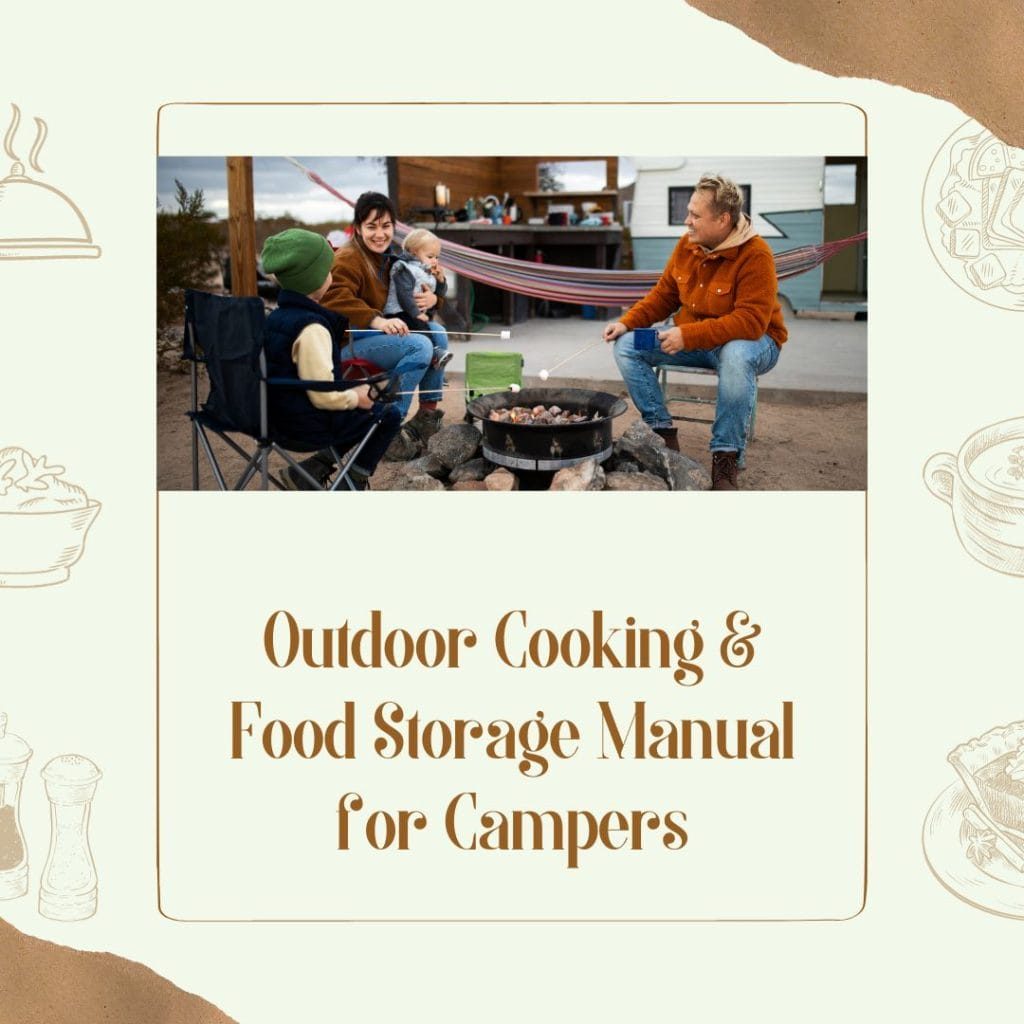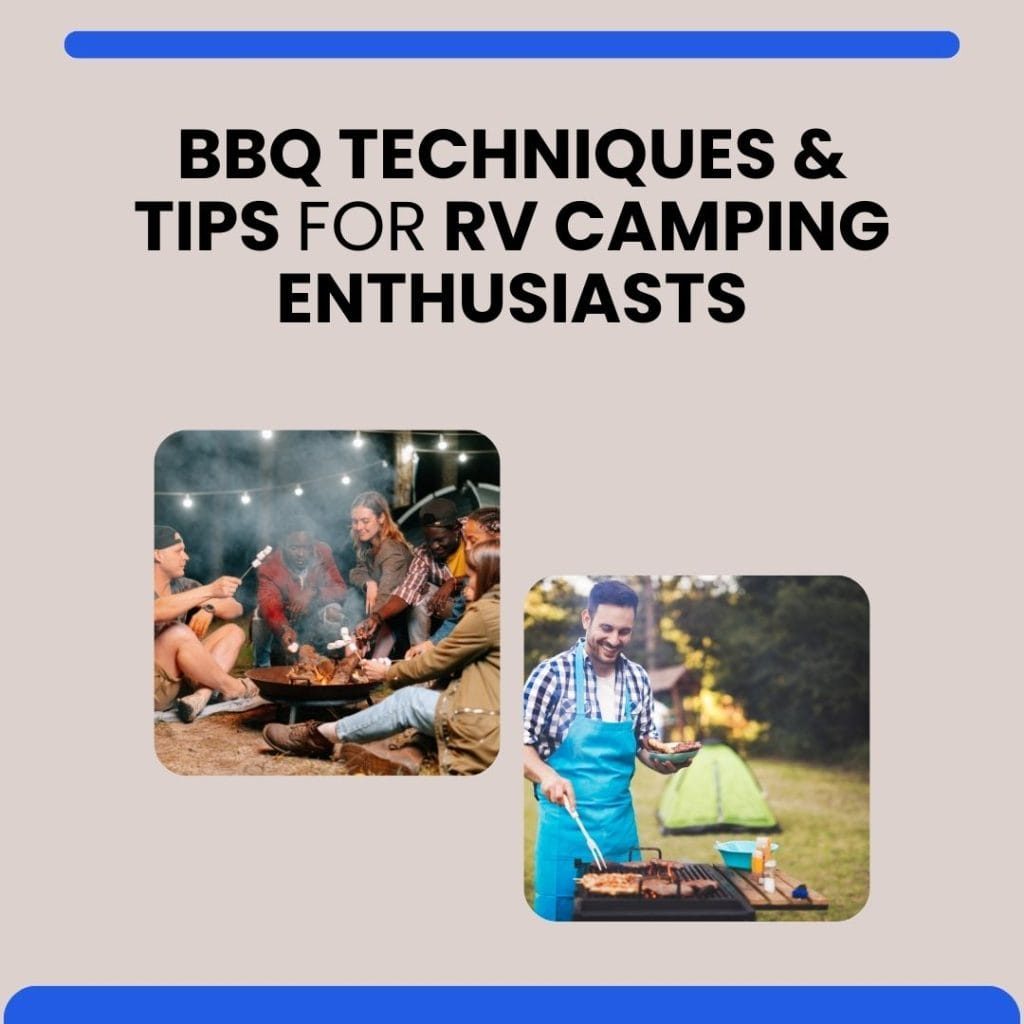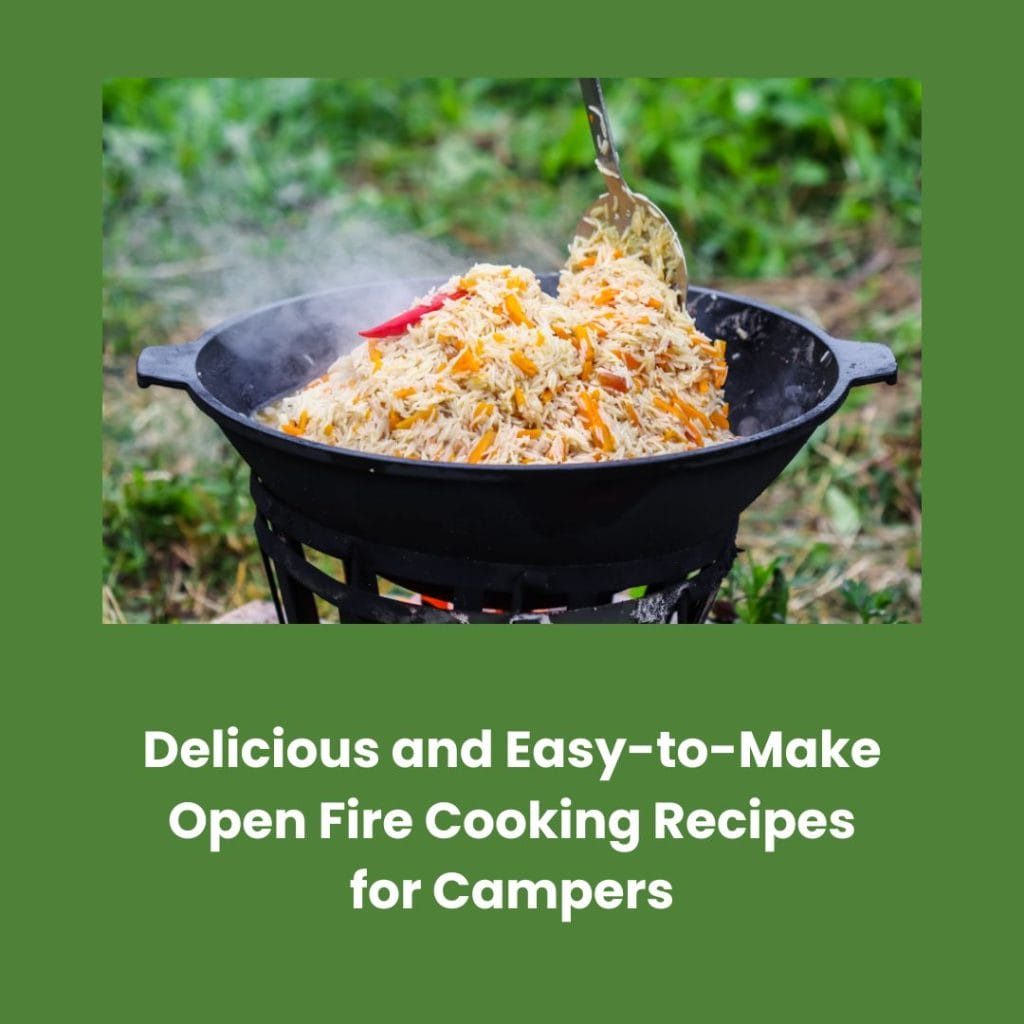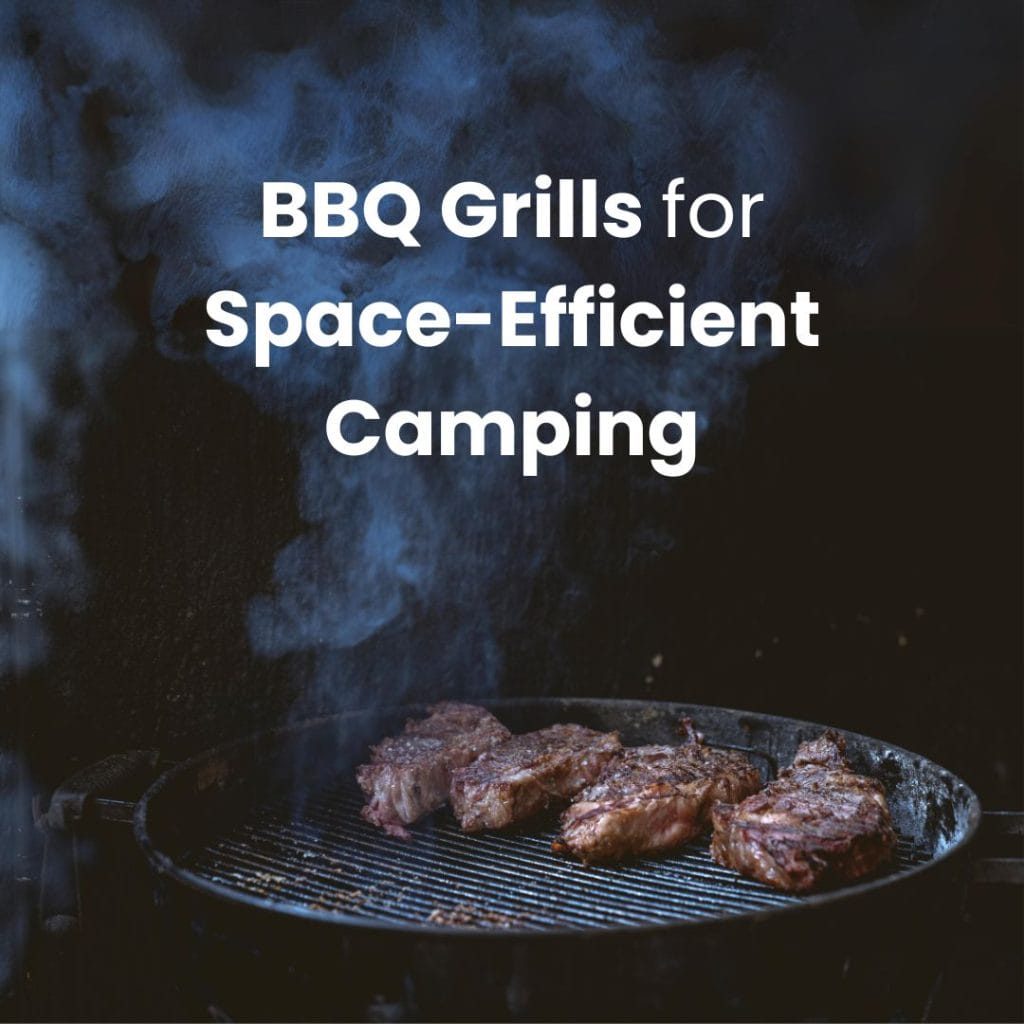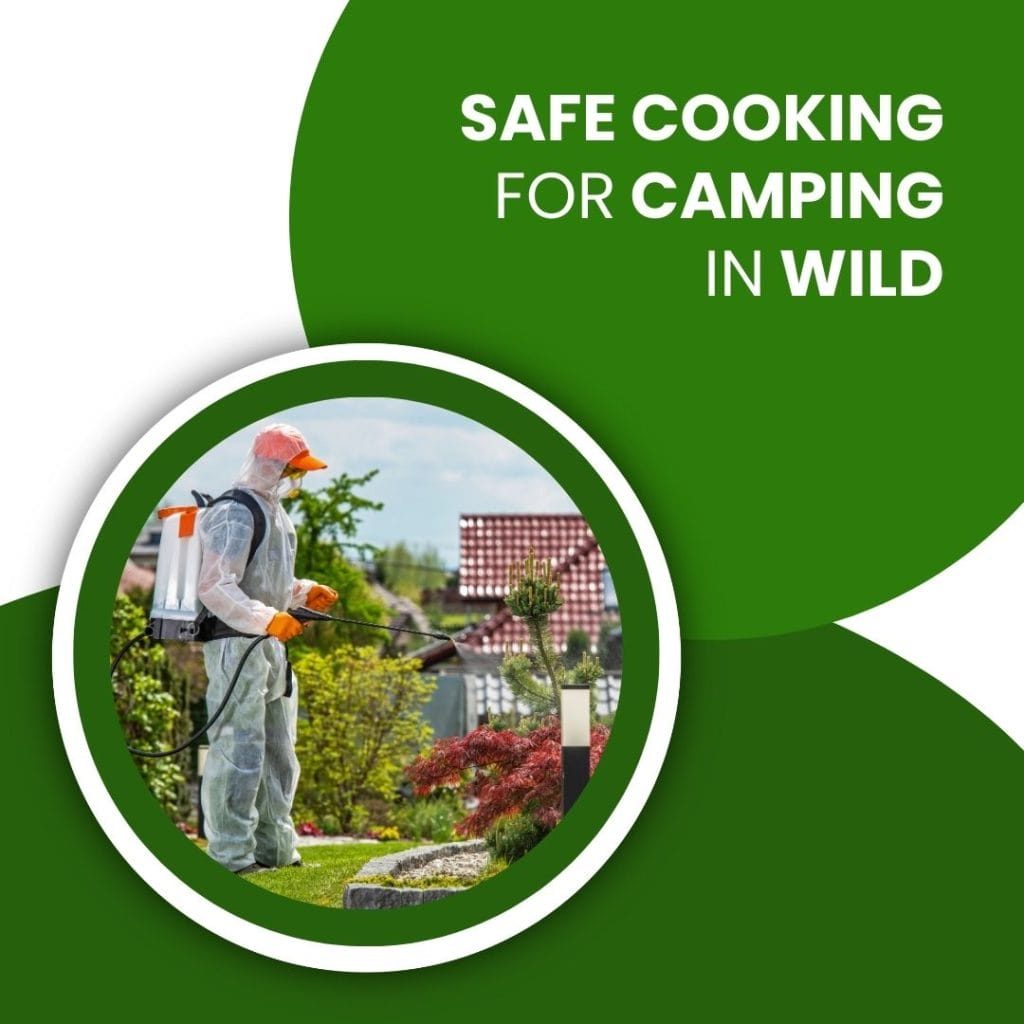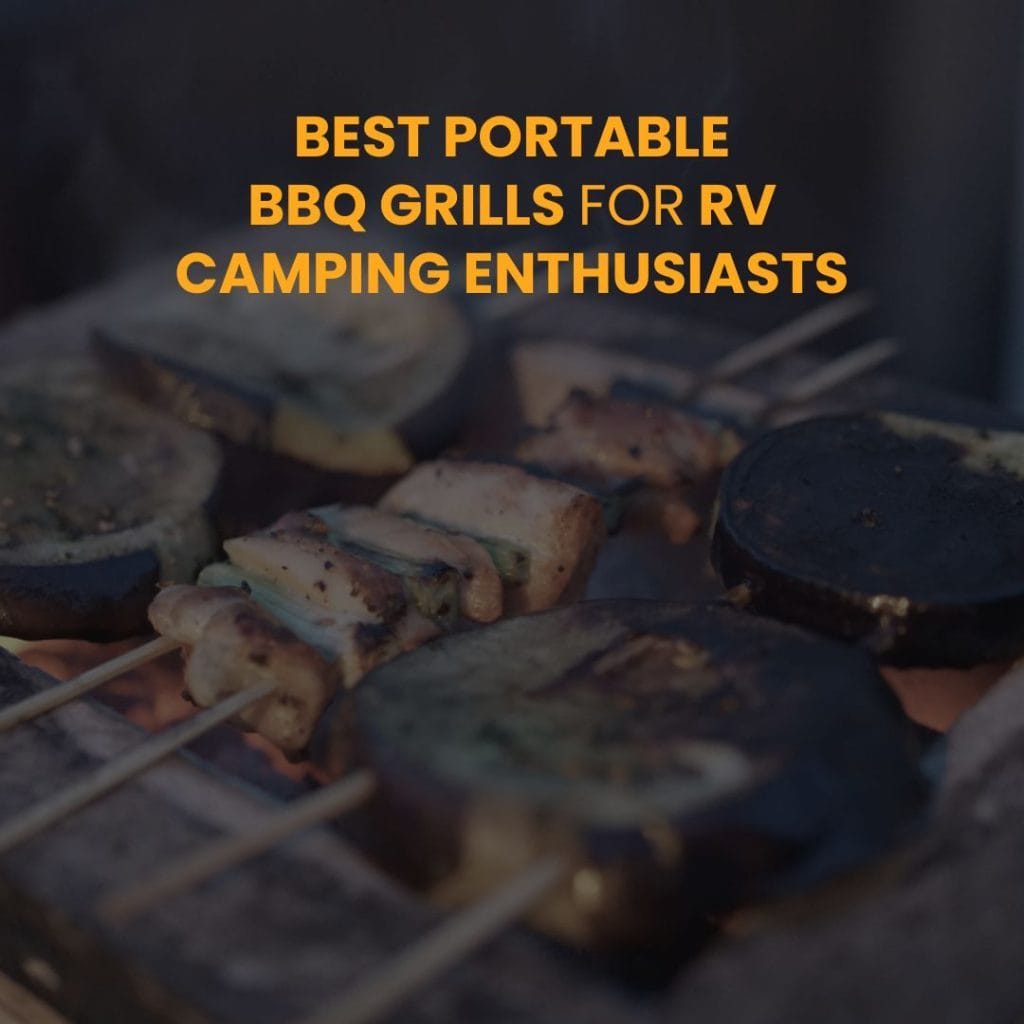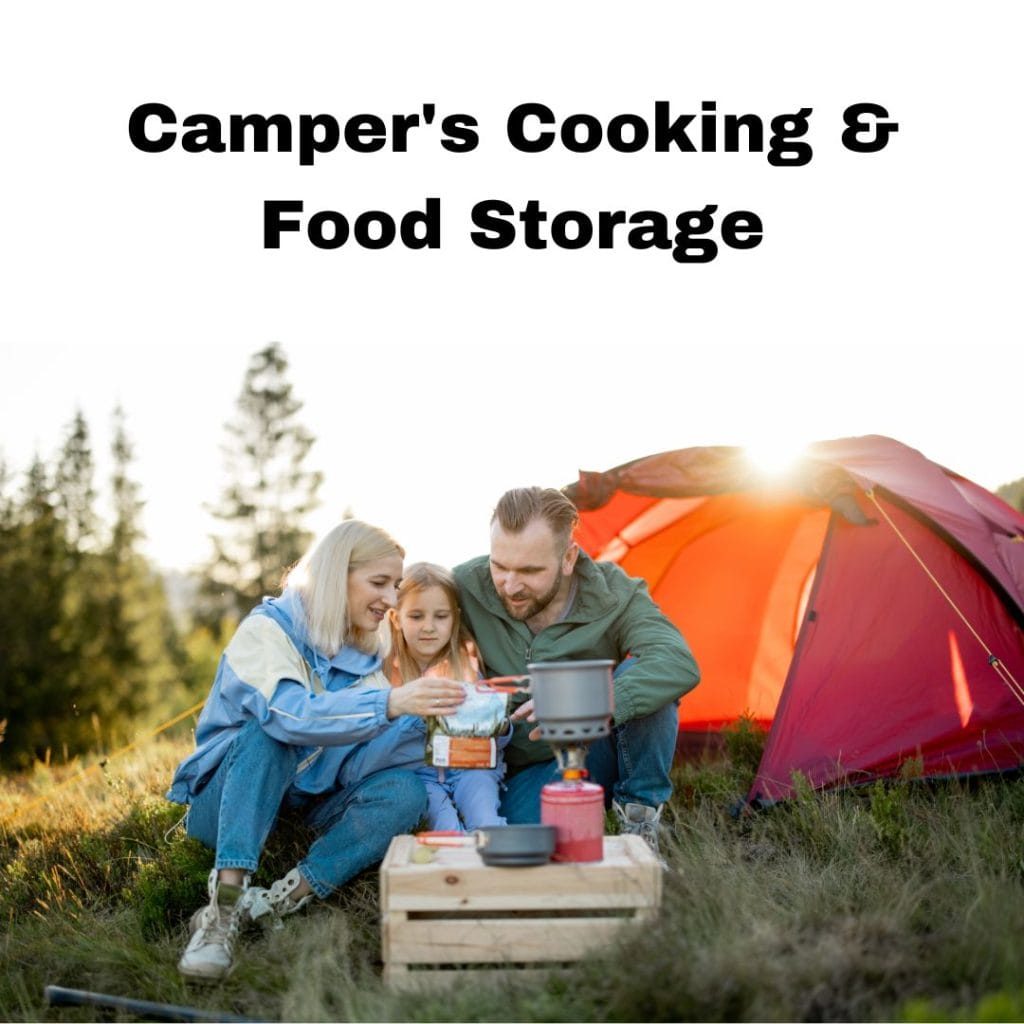Welcome to “The Camper’s Ultimate Guide to Cooking and Food Storage” – your comprehensive resource for mastering the art of outdoor culinary adventures and keeping your provisions safe and fresh. Whether you’re a seasoned camper or gearing up for your first journey into the wild, this guide is tailored to enhance your camping experience with expert advice on cooking and food storage.
Our ultimate goal is to empower you with the knowledge and confidence to create memorable meals and maintain impeccable food safety standards in any camping scenario. So, grab your apron, light up your campfire, and prepare to embark on a culinary journey through the great outdoors!
Understanding Camping Cookware: Essential Tips and Safety Practices
Camping offers a unique opportunity to reconnect with nature and enjoy the simpler things in life, and cooking over an open fire is one of those quintessential camping experiences. However, to ensure a safe and enjoyable cooking experience, it’s important to understand the right type of camping cookware to use and adhere to essential safety practices. This article will guide you through choosing the right cookware for your camping trip and provide crucial tips for safely cooking over an open fire.
1. Selecting the Right Camping Cookware
Material Matters
- Cast Iron: Ideal for open fires, cast iron cookware is durable and retains heat well. It’s perfect for frying and slow-cooking.
- Aluminum: Lightweight and heat-efficient, aluminum cookware is great for backpacking. However, it’s less durable and not suitable for very high heat.
- Stainless Steel: A versatile option, stainless steel is durable and easy to clean, though it doesn’t conduct heat as well as cast iron.
Size and Portability
- Consider the number of people you’ll be cooking for and the type of meals you plan to prepare. Compact, stackable sets are great for saving space. For backpackers, weight is a crucial factor, so opt for lighter cookware.
2. Safety Tips for Using Camping Cookware on an Open Fire
Site Selection
- Choose a stable, flat surface away from dry leaves and overhanging branches.
- If available, use designated fire pits or rings.
Fire Management
- Keep the fire small and manageable.
- Have water or a fire extinguisher nearby in case of emergencies.
Cookware Handling
- Use pot grips or pliers to handle hot cookware.
- Ensure cookware is securely placed over the fire to prevent tipping.
Food Safety
- Avoid cross-contamination by using separate utensils for raw and cooked foods.
- Ensure all food, especially meat, is cooked thoroughly to avoid foodborne illnesses.
3. Essential Safe Cooking Practices for Camping in the Wild
Prepare Ahead
- Pre-cut ingredients and pre-marinate meats to minimize on-site prep work.
- Pack foods in tight, waterproof bags or containers.
Cleanliness
- Always wash your hands before and after handling food.
- Clean cookware immediately after use to prevent wildlife attraction.
Wildlife Precautions
- Store food and cookware securely away from your sleeping area.
- Use bear-proof containers or suspend food in a tree if in bear country.
Leave No Trace
- Dispose of waste water (from cooking or cleaning) at least 200 feet from streams or lakes.
- Pack out all trash and leftover food.
BBQ Grills: Selection and Usage for the Ultimate Camping Experience
Barbecuing is an integral part of the camping experience, offering a delightful way to enjoy meals outdoors. Whether you’re an RV enthusiast or a minimalist camper, selecting the right BBQ grill and understanding its optimal usage is key to elevating your outdoor cooking experience. This article will guide you through choosing the perfect BBQ grill for your RV camping trip and provide insights on selecting compact grills for space-efficient camping.
Selecting the Perfect BBQ Grill for Your RV Camping Trip
- Types of Grills
- Charcoal Grills: Offer a traditional flavor but require more time for setup and cleaning.
- Gas Grills: Convenient and easy to use, they provide consistent heat and are ideal for those who grill frequently.
- Portable Electric Grills: A good option for campsites with electricity access, offering ease of use and cleanup.
- Size and Portability
- Consider the size of your RV’s storage space. Opt for grills that are compact yet sufficient to cook for your travel party.
- Look for features like foldable legs and detachable side tables for easy storage.
- Heat Control and Cooking Surface
- Adequate heat control is essential for cooking different types of food.
- The cooking surface should be large enough to accommodate your needs, whether it’s burgers for two or a feast for a family.
- Durability and Maintenance
- Choose grills made from high-quality materials for longevity.
- Easy-to-clean surfaces and removable parts make maintenance simpler.
Choosing the Best Compact BBQ Grills for Space-Efficient Camping
- Weight and Design
- Lightweight grills are ideal for backpackers or small-space campers.
- Innovative designs like barrel or suitcase-style grills can save space and be easy to transport.
- Multi-Functionality
- Some compact grills offer multiple cooking functions (grill, stove, smoker) in one unit, which can be extremely beneficial for space-saving.
- Fuel Efficiency
- Look for grills that use fuel efficiently to avoid carrying extra weight in fuel supplies.
- Stability
- Ensure that the grill is stable and safe to use on uneven surfaces, a common scenario in outdoor settings.
Usage Tips for Optimal Grilling Experience
Setting Up
- Set up your grill on a flat, stable surface away from flammable materials.
- For charcoal grills, allow coals to reach a consistent temperature before cooking.
Cooking Techniques
- Preheat the grill before adding food.
- Use direct heat for searing and indirect heat for slow cooking.
Safety and Maintenance
- Never leave the grill unattended while in use.
- Clean the grill after each use to prolong its life and maintain hygiene.
Environmental Consideration
- Be mindful of the environment. Dispose of charcoal or ash properly and follow all campground rules regarding grilling.
Advanced BBQ Techniques and Equipment for RV Camping Enthusiasts
For RV camping enthusiasts who relish the art of barbecuing, mastering advanced BBQ techniques and choosing the right equipment can turn a simple meal into a gourmet experience. Whether you’re a seasoned grill master or looking to elevate your BBQ skills, this article delves into expert techniques and tips, as well as highlights the best portable BBQ grills tailored for RV camping.
Expert BBQ Techniques and Tips
- Mastering Heat Control
- Indirect Grilling: For larger cuts of meat, use indirect heat to cook slowly and evenly. Position the food away from the flame, closing the lid to create an oven-like environment.
- Direct Grilling: Ideal for small, tender cuts of meat. Cook directly over the flame for a quick sear and crispy exterior.
- Flavor Enhancement
- Smoking: Infuse smoky flavors by using wood chips or chunks. Hickory, mesquite, and applewood are popular choices.
- Marinating: Enhance flavors and tenderize meats with marinades. Allow sufficient time for the meat to absorb the flavors.
- Grilling Techniques
- Reverse Searing: Start with indirect heat, then finish with a direct high heat sear.
- Rotisserie Grilling: Perfect for even cooking and self-basting, ideal for whole chickens or roasts.
- BBQ Accessories
- Invest in quality tools like tongs, spatulas, meat thermometers, and grill brushes.
- A cast-iron griddle can be a versatile addition for cooking breakfast items or delicate foods.
The Best Portable BBQ Grills for RV Camping
- Compact Gas Grills
- Advantages: Quick heat-up, easy temperature control, and clean operation. Ideal for those who grill often.
- Top Picks: Look for models that offer a good balance of cooking space and portability, with features like foldable legs and detachable trays.
- Portable Charcoal Grills
- Advantages: Impart a traditional smoky flavor. Great for the purists who enjoy the ritual of charcoal grilling.
- Top Picks: Opt for grills with adjustable air vents for temperature control and easy-to-clean ashtrays.
- Electric Grills
- Advantages: Perfect for campsites with electricity. Offer simplicity and ease of use.
- Top Picks: Seek out models with high wattage for better heat generation and adjustable temperature settings.
- Hybrid Grills
- Advantages: Offer the flexibility to use more than one type of fuel (gas, charcoal, or electric), catering to various cooking preferences.
- Top Picks: Choose grills that allow easy switching between fuel types without compromising on cooking performance.
Mastering Open Fire Cooking: A Camper’s Guide
Cooking over an open fire is an iconic part of the camping experience, offering a unique blend of fun, challenge, and satisfaction. Mastering this ancient art not only enhances your outdoor adventures but also brings a sense of accomplishment. Whether you’re a beginner or an experienced camper, this guide provides essential tips for cooking over an open fire, along with some delicious and easy-to-make recipes.
Tips for Cooking Over an Open Fire While Camping
- Prepare Your Fire
- Build a Safe Fire Pit: Clear a space away from overhanging branches and surround your fire area with rocks.
- Choose the Right Wood: Hardwoods, like oak or hickory, burn longer and provide a steady heat.
- Control the Heat
- Let the Fire Burn Down: Cook over embers rather than open flame for more consistent, controllable heat.
- Regulate Temperature: Move coals closer for more heat, further away for less.
- Use the Right Equipment
- Grates and Skewers: A simple grill grate can be placed over the fire, while skewers are perfect for roasting.
- Cast Iron Cookware: Durable and ideal for even heat distribution.
- Safety First
- Never Leave the Fire Unattended: Always have water or a fire extinguisher handy.
- Be Mindful of Wind Direction: Avoid smoke and potential fire hazards.
Delicious and Easy-to-Make Open Fire Cooking Recipes for Campers
- Classic Campfire Skewers
- Ingredients: Cubed meat (chicken, beef, or lamb), bell peppers, onions, mushrooms, and cherry tomatoes.
- Preparation: Thread the ingredients onto skewers, season with salt, pepper, and your favorite herbs.
- Cooking: Grill over the fire, turning occasionally until the meat is cooked through.
- Foil Packet Fish
- Ingredients: Fish fillets, lemon slices, herbs (like dill or parsley), butter, salt, and pepper.
- Preparation: Place each fillet on a foil sheet, top with lemon, herbs, and a knob of butter. Season and seal the foil.
- Cooking: Place the packets on the grill grate for about 10-15 minutes, flipping halfway.
- Campfire Chili
- Ingredients: Ground meat, canned beans, tomatoes, onion, garlic, chili powder, cumin, salt, and pepper.
- Preparation: In a cast-iron pot, cook onions and garlic, then add meat until browned. Mix in beans, tomatoes, and spices.
- Cooking: Simmer over the fire for an hour, stirring occasionally.
- Bannock Bread
- Ingredients: Flour, baking powder, salt, water, and oil or butter.
- Preparation: Mix dry ingredients, add water to form a dough. Shape into flat cakes.
- Cooking: Cook on a greased skillet over the fire, flipping once, until golden brown.
- Smores
- Ingredients: Graham crackers, chocolate bars, and marshmallows.
- Preparation: Skewer marshmallows and roast until golden.
- Cooking: Sandwich the roasted marshmallow and a piece of chocolate between two crackers.
Essential Dishes and Utensils for Your Next Camping Trip
When planning a camping trip, one of the key aspects to consider is the kitchen gear. The right dishes and utensils not only make outdoor cooking easier but also add comfort to your camping experience. Whether you’re preparing for a weekend getaway or a prolonged outdoor adventure, having a well-thought-out list of camping dishes and utensils is crucial. This article will guide you through the essential dishes and utensils to include in your camping checklist.
1. Plates and Bowls
Material Considerations
- Melamine: Durable, lightweight, and less prone to breaking.
- Stainless Steel: Sturdy and easy to clean, though it can get hot to the touch.
- Bamboo or Biodegradable Options: Eco-friendly and lightweight, great for environmentally conscious campers.
Size and Stackability
Choose plates and bowls that are adequately sized for your meals and can be easily stacked or nested to save space.
2. Utensils
Essential Utensils
- Knives: A good chef’s knife and a smaller paring knife, preferably with protective sheaths.
- Spatula and Tongs: For easy handling of food while cooking.
- Spoons: Include large serving spoons and individual eating spoons.
Material
Opt for stainless steel for durability or BPA-free plastics for lightweight options. Consider foldable or nesting utensils for space efficiency.
3. Cookware
- Pots and Pans: A medium-sized pot and a frying pan are essential for most camping meals.
- Portable Coffee/Tea Maker: For those who can’t start their day without a caffeine boost.
- Collapsible Cookware: Consider collapsible pots and kettles to save space.
4. Drinking Vessels
- Insulated Mugs: Keep your morning coffee or tea warm.
- Collapsible Cups: Save space and are perfect for both hot and cold beverages.
5. Cutting Board
Choose a lightweight and compact cutting board, preferably made of plastic or bamboo, for food preparation.
6. Cleaning Supplies
- Biodegradable Soap: Environmentally friendly and suitable for outdoor use.
- Sponge or Scrub: For cleaning dishes. Consider a scrub with a handle for ease of use.
- Collapsible Sink or Basin: Convenient for washing dishes.
7. Storage Containers and Bags
Opt for reusable silicone bags or compact storage containers to keep leftovers or pre-prepped meals. They should be airtight to keep food fresh and prevent any wildlife attraction.
8. Miscellaneous Items
- Can and Bottle Opener
- Measuring Cups and Spoons: If you plan to follow specific recipes.
- Oven Mitts or Pot Holders
- Ziploc Bags or Aluminum Foil: For storing and wrapping food.
Food Storage and Safety: Key to a Successful Outdoor Adventure
Proper food storage and safety are crucial elements of any outdoor adventure, whether you’re backpacking in the wilderness or setting up camp at a designated site. The way you store and handle food not only impacts your health and safety but also plays a significant role in preserving the environment and wildlife. This article explores the importance of proper food storage and outlines best practices for keeping your food safe and fresh while camping.
Importance of Proper Food Storage
Health and Safety
Improper food storage can lead to foodborne illnesses, a serious risk when medical help may be miles away. Keeping food at the right temperature and protected from contamination is essential to prevent spoilage and bacterial growth.
Wildlife Preservation
Incorrectly stored food can attract animals, leading to dangerous encounters and disrupting the natural behavior of wildlife. It’s our responsibility as campers to minimize our impact on the natural habitats we visit.
Environmental Impact
Proper food disposal and storage help maintain the cleanliness and sustainability of campsites and natural areas, ensuring they remain enjoyable for future visitors.
Best Practices for Keeping Food Safe and Fresh
1. Use Appropriate Containers
- Airtight Containers: Keep food fresh and protect it from pests and animals.
- Bear-Proof Canisters: Mandatory in some areas, these canisters are designed to keep bears and other wildlife away from your food.
2. Temperature Control
- Coolers with Ice Packs: Essential for storing perishable items like meat, dairy, and certain vegetables.
- Thermally Insulated Bags: Useful for day trips to keep food items cool.
3. Food Separation
- Raw vs. Cooked: Always store raw food separately from cooked and ready-to-eat items to avoid cross-contamination.
- Dry and Packaged Foods: Store in separate containers or bags to keep them dry and protected.
4. Minimize Leftovers
- Plan meals to avoid excessive leftovers, which can be challenging to store safely in the outdoors.
- Cook only as much as you need.
5. Safe Water Supply
- Use a reliable water purification method if sourcing water from the wild.
- Bring sufficient bottled water for drinking and cooking if unsure about water safety.
6. Regular Hand Washing
- Wash hands thoroughly before and after handling food.
- Use biodegradable soap to minimize environmental impact.
7. Proper Disposal of Waste
- Never leave food waste behind. Pack it out with you.
- Dispose of dishwater at least 200 feet away from water sources.
8. Regular Checks
- Regularly inspect your food supply for signs of spoilage or tampering.
- Dispose of any food that looks or smells questionable.
Conclusion
In “The Camper’s Ultimate Guide to Cooking and Food Storage,” we’ve navigated through the essentials of preparing, cooking, and storing food in the great outdoors. From selecting the right cookware and mastering open-fire techniques to choosing the perfect BBQ grill for your RV and adhering to food safety practices, this guide has aimed to equip you with the knowledge and confidence needed for a fulfilling camping culinary experience. Whether you’re a seasoned camper or new to the world of outdoor cooking, the insights provided here are designed to enhance the joy of cooking in nature while ensuring food safety and environmental responsibility. So, pack your gear, embrace the adventure, and prepare to create lasting memories with every meal you cook under the open sky. Happy camping and bon appétit!

